Francis Bacon in 10 Paintings: Flesh and Distortion
Francis Bacon stands out as one of the most renowned postwar painters. His trauma fueled his emotions, crafting a disturbing world filled with dark,...
Errika Gerakiti 18 November 2024
Hippocrates said that life is short, and art is long. Every great artist left behind iconic works of art that have lived long after their death. Some fought off disease, heartbreak, and financial ruin to continue working on their art. Each of these artworks is a final masterpiece from masters of different art movements who kept creating until the very end.
Here, you will learn about 7 final masterpieces from artists of the Baroque period: Impressionism, Post-Impressionism, Symbolism, and Realism. Each work of art is one last masterpiece from a master artist before their death.
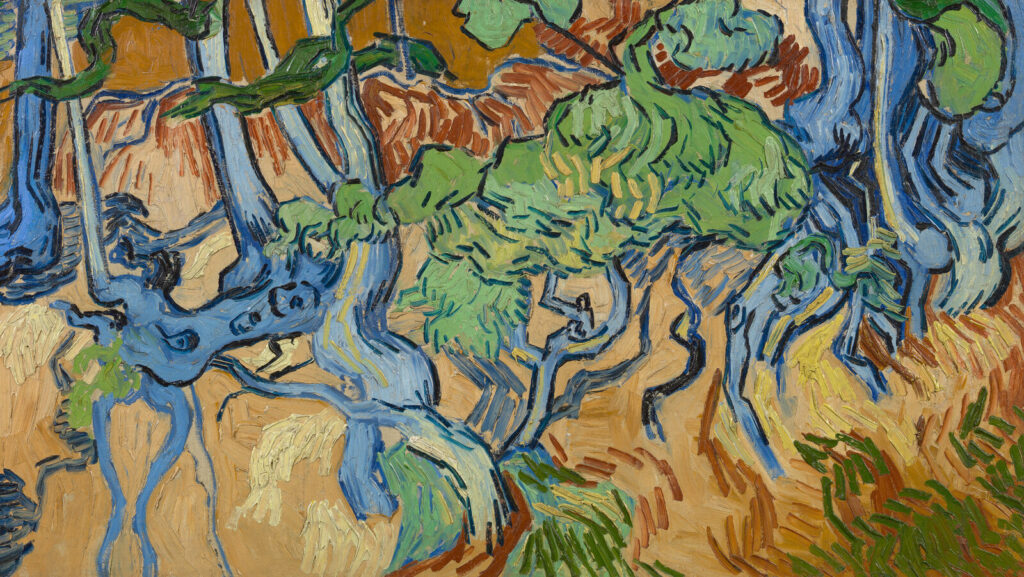
Vincent van Gogh, Tree Roots, 1890, Van Gogh Museum, Amsterdam, Netherlands.
Before he uttered his famous last words, “The sadness will last forever,” in July 1890, Van Gogh painted this final masterpiece, a seemingly unfinished double-square canvas. He strictly used these canvases in his final days living north of Paris, in Auvers-sur-Oise. The image is a slope of distorted blue tree trunks, the roots leaning and slinking down the grassy hill. Striking in its bright colors and nearly abstract at a cursory glance, the painting is a Post-Impressionist masterpiece.

Claude Monet, Water Lily Pond, 1920-1926, Chichu Art Museum, Naoshima, Japan.
With his health declining in the 1920s, Claude Monet continued working on murals of the water lilies in his beloved flower garden. It was a beautiful setting with a pond and Japanese footbridge. The master of Impressionism began this collection of works in the late 1890s and continued to work on them until his death in 1926.
The artist envisioned an immersive circular installation of expansive paintings and grandes décorations, surrounding the viewer with water, flora, and sky. This vision materialized in around 40 large-scale panels, including Water Lilies, created and continuously refined by Monet from 1914 until his death in 1926. With his eyesight failing him, the bright colors became darker with more shades of brown and red. The first paintings focus on the floating water lilies, fascinatingly lacking a horizon and spatial continuity. This is a prolonged final masterpiece from one of the greatest artists.
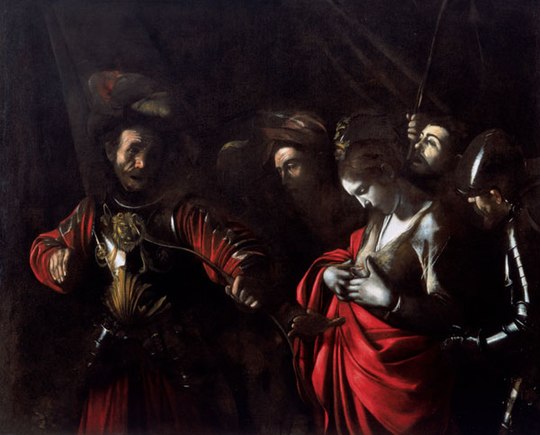
Michelangelo Merisi Caravaggio, The Martyrdom of Saint Ursula, 1610, Intesa Sanpaolo Collection, Palazzo Zevallos Stigliano, Naples, Italy.
Inspired by the legend of Saint Ursula, Caravaggio’s last painting features her execution at the hand of the king of the Huns after she rejects his love. The Baroque image is drenched in dramatic light and darkness, symbolizing the life and death behind the anger and martyrdom on display. Caravaggio places himself as a spectator in the middle, the bottom half of his face shrouded in darkness as he steals a look at the punctured virgin pierced by the vengeful king’s arrow—a stunning final piece from Caravaggio.
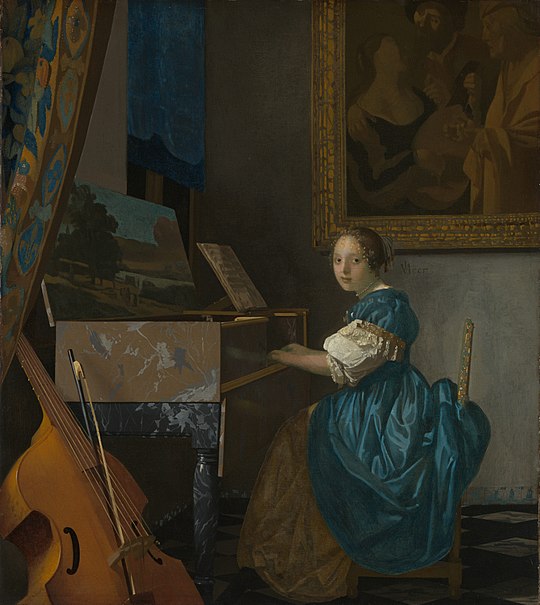
Johannes Vermeer, Lady Seated at a Virginal, 1670-1672, National Gallery, London, UK.
This beautiful final piece by Vermeer features a young woman surrounded by creative expression – a painting above her (The Procuress by Dirck van Barburen from 1622, also seen in Vermeer’s The Concert); her hands on the virginal; the sheet of music; the painted landscape on the lid of the virginal; and a gamba with its bow in the foreground. Her head is turned left with an ambiguous look on her face, either soothed or saddened by her music. In 1672, Vermeer fell into financial ruin due to the economic collapse in the Dutch Republic and died at the age of 43 in 1675.
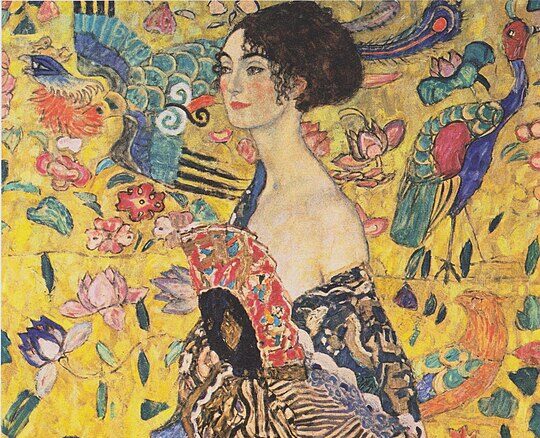
Gustav Klimt, Dame mit Fächer (Lady with a Fan), 1917-1918, private collection. Photograph by Markus Guschelbauer via Belvedere.
Gustav Klimt’s final masterpiece was a portrait that, just this year, has become the most expensive piece of art to ever sell at a European auction. Dame mit Fächer (Lady with a Fan) was discovered on Klimt’s easel in his studio after his death in 1918, though he started it in 1917. An adherent of Art Nouveau, member of the Vienna Secession movement, and ultimate Symbolist painter, Klimt filled the flattened background (inspired by Japanese ukiyo-e woodblock prints) surrounding the unknown woman with Chinese symbols – the flying phoenix and lotus blossoms – beautifully fusing his East Asian influences. The woman’s pale skin is revealed down to her bosom with the silk patterned robe sliding off her left shoulder – a sensuous detail enhancing, along with the colors, the seductiveness of the painting.
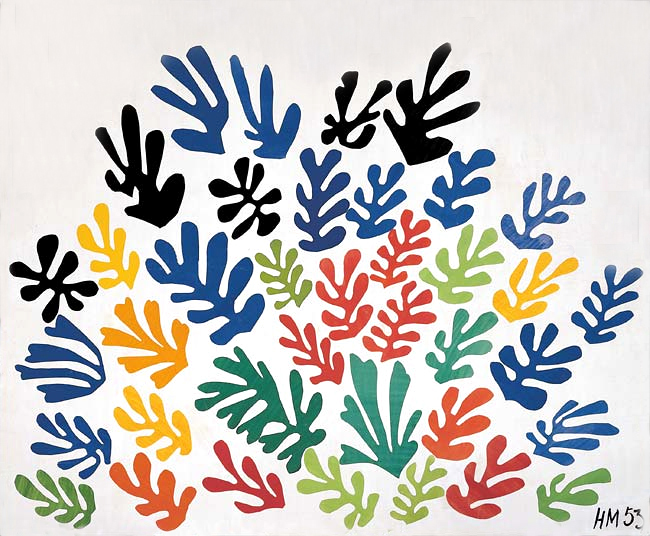
Henri Matisse, La Gerbe (The Sheaf), 1953, Hammer Museum, University of California, Los Angeles, CA, USA.
After being diagnosed with cancer and losing his ability to walk, paint, and sculpt, Matisse kept his artistic expression alive through decoupage or paper cut-out collages. Assistants helped him pre-paint these cut-outs with gouache and arrange them into colorful compositions. This final work was formed through ceramic tile and embedded in plaster – an outstanding end for an artist of lively color.
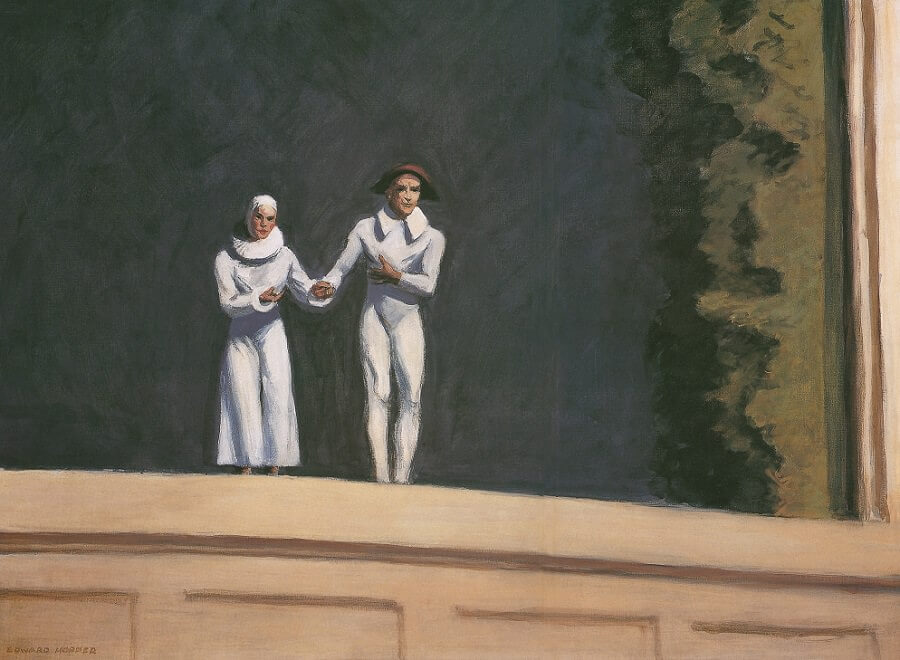
Edward Hopper, Two Comedians, 1965, private collection. Sotheby’s.
Edward Hopper’s final piece, two years before his death, is a fitting last piece. The painting represents Hopper and his wife Josephine as two comedians. With the couple in their eighties and their real-life love story soon to be given over to death, Hopper places the two figures alone on a stage with a dark background and a lush green stage left. We don’t see the audience; if there is one, they hold hands as they perform. The title refers to them as comedians. Therefore, their routine suggests that, since comedy isn’t always taken seriously as a sophisticated method of expression, it isn’t meant to be memorable; Hopper also believed this about his art. However, the realist painter was wrong. The painting of these figures and the people they represent have long endured as essential to the history of Modernist art.
DailyArt Magazine needs your support. Every contribution, however big or small, is very valuable for our future. Thanks to it, we will be able to sustain and grow the Magazine. Thank you for your help!